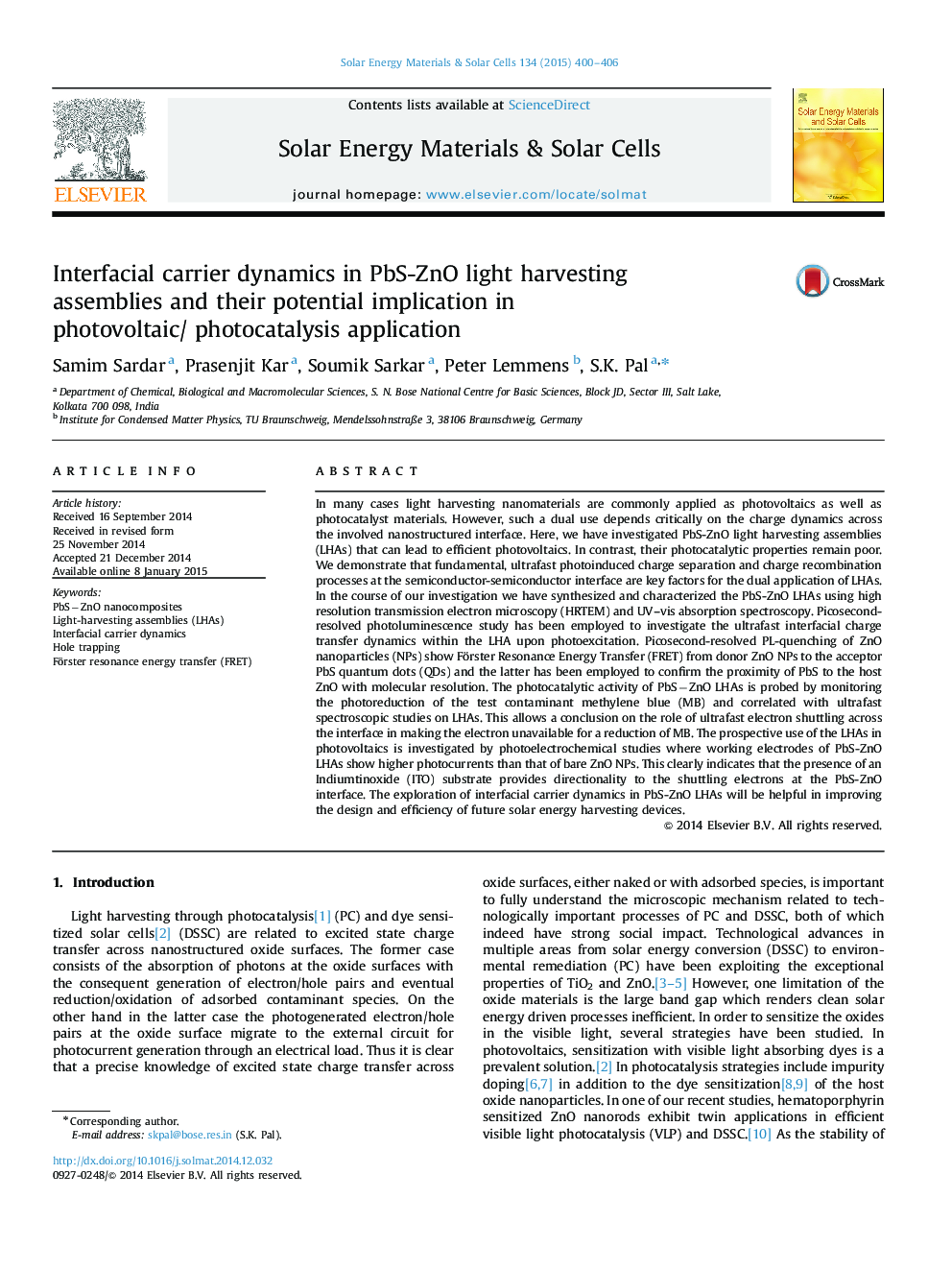| Article ID | Journal | Published Year | Pages | File Type |
|---|---|---|---|---|
| 77935 | Solar Energy Materials and Solar Cells | 2015 | 7 Pages |
•Synthesized and characterized PbS-ZnO light harvesting materials (LHMs).•Ultrafast interfacial charge dynamics validate its efficacy as LHMs.•Unequal efficacy in photovoltaics compared to photocatalysis.•FRET reveals underlying molecular mechanism.•Electron shuttling across the interface reduces photocatalytic activity.
In many cases light harvesting nanomaterials are commonly applied as photovoltaics as well as photocatalyst materials. However, such a dual use depends critically on the charge dynamics across the involved nanostructured interface. Here, we have investigated PbS-ZnO light harvesting assemblies (LHAs) that can lead to efficient photovoltaics. In contrast, their photocatalytic properties remain poor. We demonstrate that fundamental, ultrafast photoinduced charge separation and charge recombination processes at the semiconductor-semiconductor interface are key factors for the dual application of LHAs. In the course of our investigation we have synthesized and characterized the PbS-ZnO LHAs using high resolution transmission electron microscopy (HRTEM) and UV–vis absorption spectroscopy. Picosecond-resolved photoluminescence study has been employed to investigate the ultrafast interfacial charge transfer dynamics within the LHA upon photoexcitation. Picosecond-resolved PL-quenching of ZnO nanoparticles (NPs) show Förster Resonance Energy Transfer (FRET) from donor ZnO NPs to the acceptor PbS quantum dots (QDs) and the latter has been employed to confirm the proximity of PbS to the host ZnO with molecular resolution. The photocatalytic activity of PbS−ZnO LHAs is probed by monitoring the photoreduction of the test contaminant methylene blue (MB) and correlated with ultrafast spectroscopic studies on LHAs. This allows a conclusion on the role of ultrafast electron shuttling across the interface in making the electron unavailable for a reduction of MB. The prospective use of the LHAs in photovoltaics is investigated by photoelectrochemical studies where working electrodes of PbS-ZnO LHAs show higher photocurrents than that of bare ZnO NPs. This clearly indicates that the presence of an Indiumtinoxide (ITO) substrate provides directionality to the shuttling electrons at the PbS-ZnO interface. The exploration of interfacial carrier dynamics in PbS-ZnO LHAs will be helpful in improving the design and efficiency of future solar energy harvesting devices.
Graphical abstractFigure optionsDownload full-size imageDownload as PowerPoint slide
